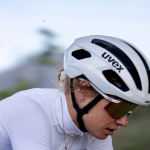The euphoria the sport footwear market experienced in the first quarter very quickly dissipated in the second quarter as the market struggled against the headwinds created by a difficult economy, cooler and wetter weather and tough comparisons to last years second quarter fueled by tax rebate stimulus checks.
According to retail point-of-sale data compiled by SportScanINFO, each month in the second quarter ended August 1 declined in the low-single-digits after a low-single-digit increase in the first quarter. Units sales declined in the mid-singles in Q2, yielding a low-single-digit increase in average selling prices. Much of the ASP gain came from a shift to premium products in general and a move away from sandals as the weather (and Crocs) cut into sales. Sport Footwear sales at full-line were strong, while sales growth in the family channel slowed slightly. The big delta was at the mall where sales slowed from low-single-digit increase in the first quarter driven by very strong basketball numbers — to a high-single-digit decline in the second quarter.
On the brand side, the catalyst for the negative trend came as Brands Nike and Jordan slowed from their previous robust growth. This most likely explains the slowdown at the mall, as many have the vast majority of their business with Nike/Jordan. There has been considerable angst in the market about the heavy market share domination of the Nike business — Brand Nike climbed to nearly 36% and Brand Jordan to over 10% of the combined sports retailer and family retailer market in Q2 — and the need for another brand to step up and provide retailers some cover should NKE start to lose momentum. But no white knight has emerged to take share back. Asics has certainly grabbed share in the performance running business, but many argue this is due to lower price points offered on fresh deliveries of older product like the 2130. Under Armour got a lot of play, particularly in the mall, as retailers hoped for a non-Nike option to drive business.
But weaker-than-expected turns on the first round of running footwear and a slower performance trainer business has UARM going back to the drawing board with their footwear business as they look for the right price points, the right look and just the right amount of the right technology to build a sustainable business. Based on retailer feedback received by Sports Executive Weekly, many feel that Adidas will need to step it up and deliver on that brands promise again. The other major concern that is troubling many in the market is the apparent slowdown in growth in the skate category, which slowed to a low-teens increase in the second quarter compared to a strong double-digit increase in the first quarter and last year.
The trend had been fueled by a strong to very strong double-digit growth rate in the family footwear channel, but that business turned flat in the second quarter and turned negative in the July fiscal month ended August 1. One executive in this channel suggested to SEW that the conversation for their business is more of a canvas conversation rather that skate. Where they saw consumers energized by newer brands expanding distribution in that market channel over the last two years — think Etnies, then DC and now Nike the consumer has been drawn more to the Chuck Taylor silhouette of late, which SSI tracks in the classics category for the base styles and in canvas for the derivatives. Based on the retail point-of-sale date compiled by SportScanINFO, the Converse black All Star high top is selling roughly a third more pairs each week this year – and the number of pairs sold in the first week of the fiscal August period this year were about twice the number of pairs sold the first week of the fiscal July period this year.
The overall classics category was still down in the high teens for the period as a strong Chuck is offset by a weaker Air Force 1 and K-Swiss and Reebok classics basic-white-leather-footcovering businesses. Excluding Chucks, classics sales would have been down about 25% for the quarter. Canvas, on the other hand, was up in the high-teens for the period. One bright spot during Q2 was the positive momentum of the toning/wellness footwear category.
Sales continued to expand week over week, even as the rest of the industry cooled off. Toning is now on track to be a $200 million business this year and certainly will be much larger in 2010. Skechers took over the number one share spot during the quarter at 42%, while Reebok fell to second spot at 32% and FitFlops in the #3 spot. Most (but not all) major brands and retailers are looking to play in this category, which will further serve to boost results next year. Right now the market has been driven by independent footwear retailers and the mall, but the family footwear channel is coming on strong on the surge from Skechers.
Running footwear slowed growth in the second quarter, up in the low-single-digits for the period compared to high-single-digits in Q1. Asics held trend, but New Balance saw share decline once again. Adidas, while still down, saw a sequential improvement in its business as retailers took advantage of off-price goods from the brand. The Saucony trend slowed but still posted a solid a mid-teens increase for the period. Brooks also improved its position, with dollar sales growth accelerating during the quarter.
The Nike trend in running also slowed markedly from its first quarter trend. Under Armour running continues to give back early share gains and ended Q2 with 1.4% share — half of Sauconys or Pumas share, by comparison after a solid launch quarter in Q1. Fashion running was flat for the quarter, a major deceleration as Nikes Shox program showed real fatigue. Puma is faring very nicely in the fashion running category. Performance running (about 40% of the market) held trend, indicating that true athlete do not scrimp on their equipment during a recession. This was a positive for Asics, Brooks and Saucony.
The slowdown of Jordan after a very strong first quarter really hurt basketball sales in the second quarter. Overall sales slowed from mid teens gains in Q1 to flat in Q2; Jordan growth slowed from +30% to +3%. All other major brands — including Nike — posted declines in basketball in the second quarter. After a very difficult first quarter, sandals sales were flat in the second quarter, with every major brand, net of Crocs, showing growth. Net of the Crocs business, it is estimated that Sandals sales grew in the low-single-digits. Keen is starting to give back share and Teva has started to take share back. Lifestyle fashion athletic continued to struggle, down in the high-single-digits. Nike Lifestyle sales grew about 50% in Q2.
Skechers Lifestyle sales declined in the low teens. Training continued its slow march to irrelevancy with a high-single-digit decline. Under Armour netted a decline and could not positively anniversary a launch. Cleated footwear was soft in the second quarter down in the mid singles, with only Nike showing improvement. One bright spot for Nike and Jordan, even in the face of the slowdown was that they both continued to take share from the rest of the brands. Brand Nike gained 150 basis points in share on a low-single-digit increase in sales while Jordan gained about 50 basis points on a low-single-digit increase. Converse saw sales improve in the mid-teens.















